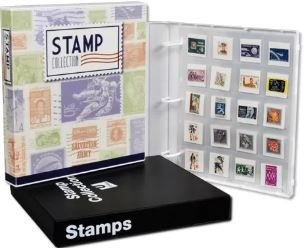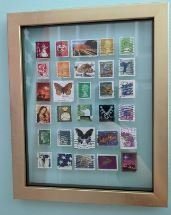Stamp collecting is a fascinating hobby, but curating a thematic stamp collection takes it to another level. Thematic collecting focuses on gathering stamps that share a common theme or subject, making it a rewarding and organized way to engage in philately. But to successfully build a thematic stamp collection, you need both a strategy and a keen understanding of the subject matter. In this guide, we’ll explore how to curate a thematic stamp collection: master the art of focused collecting while avoiding common pitfalls that could hinder your progress.

1. Choose Your Theme Wisely
The first and most crucial step when learning how to curate a thematic stamp collection is selecting a theme that excites you. A thematic collection is often more enjoyable and sustainable when it reflects your personal interests. It could be anything from historical events, animals, space exploration, famous figures, or even a specific country or region. Whatever theme you choose, make sure it’s something you’re passionate about, as this enthusiasm will fuel your collecting journey.
Pitfall to Avoid: A common mistake new collectors make when trying to curate a thematic stamp collection is picking a theme that is too broad or vague. For example, a theme like “world history” can become overwhelming and difficult to manage. Instead, narrow it down to a specific era, like “World War II,” or a narrower sub-theme, such as “World War II Propaganda Stamps.” This will keep your collection focused and achievable, allowing you to track your progress more effectively.
2. Research Your Theme Thoroughly
Once you’ve chosen your theme, research it thoroughly. Understanding the historical, cultural, or artistic background of your chosen theme is essential to building a rich and informed thematic stamp collection. For instance, if you’re focusing on a theme like “wildlife,” it’s important to know which species were featured on stamps throughout history and which stamps are considered rare or valuable.
Pitfall to Avoid: One common mistake when curating a thematic stamp collection is jumping into buying stamps without enough research. Failing to understand your theme means you could miss out on key stamps or, worse, acquire stamps that don’t fit your collection at all. Take the time to study catalogs, books, and online resources to learn about the stamps related to your theme. This research will also help you avoid purchasing stamps that are irrelevant or duplicates.

3. Stay Organized and Set a Budget
A crucial aspect of curating a thematic stamp collection is staying organized. Keeping track of your acquisitions is essential to ensuring you don’t end up with duplicates or forget what you already have. Invest in a good album with space for proper documentation. A thematic collection should be stored in a logical order, perhaps by year of issue, country of origin, or subject within the theme.
Moreover, curating a thematic stamp collection can be costly, so it’s important to set a budget. Without a clear financial plan, you might overspend, especially when you start hunting for rare or limited-edition stamps.
Pitfall to Avoid: Many collectors get swept up in the excitement of acquiring stamps, especially rare ones, without keeping their collection organized. This leads to frustration when stamps get lost or misplaced, and may even cause the collection to become disorganized and less enjoyable. Similarly, failing to set a budget can lead to overspending, especially when rare or desirable stamps become available. Avoid this by planning ahead and sticking to both an organization system and a financial limit.
4. Learn the Art of Stamp Grading
When curating a thematic stamp collection, it’s important to understand the condition and value of each stamp. Stamp grading is a skill every collector should develop, as it helps you assess the quality of the stamps you add to your collection. Factors like centering, perforation quality, gum condition, and postmark details all play a role in determining a stamp’s grade and, consequently, its value.
Pitfall to Avoid: A common mistake for new thematic collectors is undervaluing the importance of condition. A stamp may look appealing at first glance, but if it has damage, fading, or poor centering, it might not be worth adding to your collection. Additionally, collecting stamps in poor condition can diminish the overall value of your thematic collection. Educate yourself about stamp grading or consult experts to ensure your collection remains high-quality.

5. Connect with Other Collectors and Experts
Stamp collecting doesn’t have to be a solo activity. Connecting with other collectors who share your passion for thematic collecting can be a huge benefit. Join stamp clubs, attend stamp exhibitions, or participate in online forums dedicated to thematic collecting. Engaging with other collectors can provide insights, tips, and even opportunities to trade or purchase rare stamps that are perfect for your collection.
Pitfall to Avoid: Trying to curate a thematic stamp collection without any external input can lead to isolated decision-making and missed opportunities. You might unknowingly overlook valuable stamps or make avoidable mistakes in your collecting strategy. By networking with other collectors and seeking expert advice, you gain access to a broader range of knowledge and resources that can help you curate a more complete and informed collection.
6. Avoid Overloading Your Collection with Too Many Stamps
A thematic stamp collection should be focused and purposeful. It’s easy to get caught up in the desire to add as many stamps as possible, but this can dilute the theme you’re trying to build. Instead of accumulating every stamp related to your theme, focus on obtaining stamps that truly enhance and add value to your collection. You might want to prioritize rare or historically significant stamps, rather than trying to collect everything that fits your theme.
Pitfall to Avoid: New collectors often fall into the trap of collecting every available stamp, leading to a collection that feels scattered and unfocused. A thematic collection works best when it’s refined and purposeful. Try to avoid overloading your collection with stamps that don’t align with your specific theme or your goals as a collector.

Conclusion: Curating a Thematic Stamp Collection Takes Time and Patience
Curating a thematic stamp collection is a rewarding journey, but it requires time, patience, and strategy. By following these steps—choosing a focused theme, conducting thorough research, staying organized, grading stamps properly, connecting with experts, and avoiding unnecessary acquisitions—you’ll master the art of thematic collecting and build a collection that reflects your interests and passion.
By carefully curating your thematic stamp collection and avoiding common pitfalls, you can create something truly special that not only represents a theme but also showcases your dedication as a collector. Happy collecting, and remember to keep your collection focused, informed, and organized as you grow your passion for philately!



